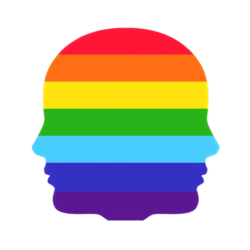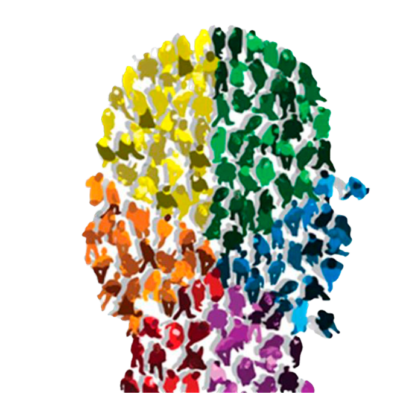Quick Guide to Inclusive Language

Call them what they wants.
«The English language is in need of a personal pronoun of the third person, singular number, that will indicate both sexes and will thus eliminate our present awkwardness of speech.»
-1890 Chicago School Board Meeting

BIPOC: is an acronym that stands for black, indigenous and people of color. This has been embraced as a descriptor by some alienated by it. This brings us to the question is white a color? Does the expression people of color exclude white people? The most accepted term now it’s black, indigenous, Hispanic, Asian, and other people of color.
«The most accepted term now is black, indigenous, Hispanic, Asian, and other people of color.»
The unrepresented is a complicated group. This is appropriate this is appropriate when it creates accuracy and makes the case more specific. The term minority is complicated in the use, because it focuses on the people of the majority, usually white people, and doesn’t take into account the fact that in many cases a combination of minorities can make up a majority.

What is Inclusive Language?
Race & Ethnicity
Immigration Status & Language Proficiency
Sex, gender, gender, identity, & sexual orientation
Ability, e.g., physical & mental
The unrepresented is a complicated group. This is appropriate this is appropriate when it creates accuracy and makes the case more specific. The term minority is complicated in the use, because it focuses on the people of the majority, usually white people, and doesn’t take into account the fact that in many cases a combination of minorities can make up a majority.
Race & Ethnicity
American Indian or Alaskan Native
These are tribal people that come from the North American continent. They consist of sub groups such as the Navajo nation, the Cherokee and the Eskimos.
Arab and Arabian
This is a very large umbrella group for a pan-ethnic view. These people extend more than the Arab league, which makes up 22 nations and was formed in 1945. There are many that fall into the category that are technically not considered Arabic.
Asian
Another very large umbrella group for a pan-ethnic view. These people , from one or more nationalities or ethnic groups, stemming from the far east, south east Asia, or the Indian subcontinent.
Black / African-American
The most inclusive term is «black».
The most inclusive term is «black».
This does not denote gender, language, nor origin. Many black members do not identify with African nor Caribbean. Colored people African-American can be considered exclusive.

Middle Easterner
This, this is from a descendent of the Middle East. They cover North Africa to Turkey to Cyprus and Lebanon.
Latino & Hispanic
Latino generally refers to any language using a Latin romance language in the Americas. This includes the Caribbean and Brazil. Hispanic generally refers to Spanish-speaking countries, including Spain and excluding Brazil.
Pacific Islander
This group is very general and it covers Micronesia, Fiji, Hawaii, Tahiti, and more.
Old Russian
Coming from Russia can mean something different than having Russian ethnicity. There are very defined subsets of Russian orthodox old believers that go back many centuries.


Immigration Status & Language Proficiency
Its a Small World
Just as American language has tended to center on the white experience, descriptors of immigration status tend to center on and affirm people with citizenship. They tend to dehumanize, criminalize and/or vilify those without citizenship. This diverts attention from the circumstances that led them to leave their countries and from the barriers to legitimacy they’ve encountered in the U.S., and puts the “blame” solely on the individual or family. Inclusive language around immigration status affirms and acknowledges the legitimacy of everyone as human beings:
Immigration Status
Rather than referring to residents who are not citizens with such dehumanizing terms as alien or illegal alien or simply illegal, the word “undocumented” is advised, ideally:
• The person or family is undocumented, not they are an undocumented family.
• Or, the person or family lacks documentation; or lacks a path to citizenship.

Language Proficiency
She speaks English as a second language is viewed as inadequate in that people may speak more than two languages. Emerging bilingual is equally limiting and English language learner is paternalistic. Preferred: She speaks English in addition to other languages, or she speaks Spanish and is learning English, or Spanish or Japanese or Russian, etc. is her first language.
(U.S.) Citizens
People who were born in the U.S. or who have become “naturalized” after being permanent residents. Entitled to receive every benefit as other every U.S. citizen.
Permanent or Conditional Residents
Legal permanent residents (LPRs) are those who have a “green card.” A green card holder, or lawful permanent resident, has authorization to permanently live and work in a country. Green card holders have all the benefits of citizenship except voting.
Non-immigrants
People in this category are in the country legally but only on a temporary basis. Examples:
• Students (F-1 visa)
• Business visitors or tourists (B1/B2 visas)
• Fiancées (K-1 visa)
• Individuals granted temporary protected status
Undocumented
People who are in the U.S. without permission are undocumented either because they overstayed a legal temporary visa or they entered the U.S. without going through a port of entry. They are not authorized to work or access public benefits. People who are undocumented risk being deported. This creates a highly stressful and unstable living situation.


Sex, Gender, Gender Identity, & Sexual Orientation
Sexual Orientation
- Asexual – A person who does not experience sexual attraction.
- Bisexual – A person emotionally, romantically or sexually attracted to more than one sex, gender or gender identity though not necessarily simultaneously, in the same way or to the same degree. Sometimes used interchangeably with pansexual.
- Gay – A person who is emotionally, romantically or sexually attracted to members of the same gender. Men, women and non-binary people may use this term to describe themselves.
- Lesbian – A woman who is emotionally, romantically or sexually attracted to other women. Women and non-binary people may use this term to describe themselves.

Gender Identity
- AFAB and AMAB – Acronyms for assigned female at birth and assigned male at birth.
- Agender – A general term to describe someone who has no gender.
- Ally – Any non-LGBTQ person who helps or supports an LGBTQ person or the LGBTQ community; also used in the context of race, as in “white ally” to people of color, or, “white accomplice.”
- Assigned gender – The gender a person is identified as at birth, usually based on their anatomy.
- Cisgender – People who identify with their assigned gender. From the Latin prefix cis-, which means “on this side of,” as opposed to trans-, which means “on the other side of.”
- Gender-affirming surgery – Any surgery that changes a person’s body to align with the person’s gender identity. This may involve chest reconstruction (commonly called top surgery), genital reconstruction (also called bottom surgery) and other physical changes.
- Gender dysphoria – A person’s deep dissatisfaction, anxiety or distress about the disparity between their gender identity and assigned gender. Not all transgender people have dysphoria.
- Gender expression – The external ways in which people show their gender. This could be through their name, pronouns, appearance, voice, mannerisms and other means.
- Gender fluid – This means having a gender identity that changes — long term, day to day or on any other timeline.
- Gender identity – A person’s inner sense of their gender, whether it’s male, female, a combination of both, fluid or neither. Transgender people’s gender identity is different from the gender they were assigned at birth. Your gender identity may not be obvious to other people.
- Gender nonconforming – A descriptive term for people whose gender identity or expression doesn’t fit traditional male and female roles and behavior. It doesn’t necessarily mean transgender. For example, someone who was assigned male at birth and who identifies as male but whose gender expression does not fit traditional male roles may consider themselves gender nonconforming but not transgender.
- Genderqueer – Another term for gender nonconforming.
- Inter-sex – This is an umbrella term to describe people born with chromosomes, hormones and/or anatomy that is not typically male or female. Intersex people can be any gender, including transgender or gender nonbinary.
- Multigender – Identifying as two or more genders. People who identify as two genders may call themselves bigender.
- Nonbinary – Anyone who identifies as neither male nor female. Some nonbinary people consider themselves transgender; others do not.
- Transgender – An umbrella term to describe people whose gender identity or gender expression is different from the gender they were assigned at birth. Not all transgender people change their bodies with hormones or surgery, and not all match their gender identity with their gender expression.
- Transition – The process of aligning gender expression with gender identity. Transition is different for every transgender person. Some make social changes, such as using a different name and pronouns, or wearing different clothes. Some use hormone therapy to change themselves physically and emotionally. Others choose surgery. Many choose a combination. Transitioning may be public, including telling family, friends and co-workers. It may include changing your name and gender on legal documents. Or it may be private.


- Ableism – Discrimination in favor of people who are able-bodied.
“After your meeting, will you run down to my office to pick up the documents?”
- Able-bodied – A person without a physical disability.
- Ageism – Discrimination based on age – usually negatively stereotyping older adults or the aging process but also patronizing or underestimating the abilities of younger people.
- Autism spectrum disorder – A complex developmental condition that involves persistent challenges in social interaction, speech and nonverbal communication, and restricted/repetitive behaviors. The effects and severity differ in each person.
- Body weight – People of higher weight experience discrimination and stigma as a result of living in a larger body. A 2020 review analyzed 33 studies related to people’s preferences around weight related terminology.
- Deaf person – A person who is part of the Deaf community. The Deaf community has its own culture, language(s).
- Hard of hearing – A phrase used to describe a person usually with mild to moderate hearing loss.
- Hidden/invisible disability – A non-obvious / hidden / invisible condition that substantially limits one or more major life activities, including people with non-obvious visual or auditory disabilities or repetitive strain injury.
Ability: Physical & Mental

- Neurodiverse – An adjective most often used to describe autistic people or other people who have neurologically atypical patterns of thought or behavior.
- Neurotypical – An adjective used to describe people who have typical developmental, intellectual and cognitive abilities. Generally used in contrast with people who are neurodiverse.
- Obvious disability – A manifestation of the body that indicates some type of disability.
- Person with a disability/people with disabilities – This represents person-first language; see the person, not the disability. Widely, but not universally used in the community for people with disabilities.
- Sanism (mentalism) – A type of discrimination and oppression against a mental trait or condition a person has or is judged to have. The discrimination/oppression often occurs through common phrases, i.e.; “crazy talk,” “mental case,” “lunatic,” “wacky,” “nuts,” etc.
- Substance use disorder – A disease that affects a person’s brain and behavior and leads to an inability to control the use of a legal or illegal medication or drug.
Use instead of “addicted to drugs” or “drug addict.”

Terms to Avoid
Ableist Language
Amp/amputee
Handicapped
Cripple, crippled
Invalid
Wheelchair-bound, or confined to a wheelchair (wheelchairs are mobility tools, and people are not stuck in them)
Diabetic
Lame
Gimp
Spaz
Hearing impaired is a less favored term in the deaf/hard-of-hearing community as the word impaired can have negative connotations and focuses on what a person can’t do.

Sanist Language
Addict, addicted
Drug baby
Invalid
Opioid addict
Bipolar
Handicapped
Lunatic
Retarded
Crazy
Idiot
Manic
Deranged
Imbecile
Maniac
Drug addict
Insane
Nuts
Weird
More Terms to Avoid
Biological male/female, born a man/woman – Considered derogatory. Use “assigned male/female at birth” or “designated male/female at birth.”
Gender identity disorder -This is an obsolete medical and psychological term for gender dysphoria.
Hermaphrodite – Outdated, offensive term for intersex.
MTF and FTM – Old acronyms for male-to-female and female-to-male. Transgender woman and transgender man are generally accepted terms instead.
Preferred name, preferred pronoun – Like anyone, a transgender person’s name and pronouns are what they call themselves, not what they prefer to be called. For the same reason, avoid “real name.”
Pre-operative, post-operative – Whether a transgender person has had gender-affirming surgery may have nothing to do with transitioning. It’s usually an invasion of privacy to describe someone in such terms.
Sex-change operation – Many transgender people who have surgery — and not all do — see themselves as affirming their gender, not changing it. Gender-affirming surgery is preferred.
Sexual orientation – This refers to a person’s romantic or sexual attraction to others. It is not the same as gender identity.
Tranny – Offensive to most transgender people, even though some use it to describe themselves.
Transgendered – Incorrect adjective for transgender, the same as saying someone is “maled” or “femaled.”
Transsexual – An older adjective for people who have changed, or want to change, their bodies to align with their gender identity. Some transgender people use the word to describe themselves, but many do not.

Best Practices
- If you’re unsure what name or pronoun someone uses, politely ask. It’s usually OK to ask: “What pronouns do you use?” Remember, it’s not what pronouns they “prefer.”
- Do your best to use someone’s name and pronouns consistently, even if you knew the person by another name.
- Acknowledge any language mistakes you make and how it may make the person feel.
- Talking about a transgender person’s previous identity is called deadnaming. It’s disrespectful. If you don’t know how to refer to someone in the past, ask. If the person doesn’t want to discuss it, respect that.


Inclusion in Numbers
- 48% of generation Z racial or ethnic minorities.
- Diverse companies enjoy 2.5x more cash flow per person.
- Inclusive management styles have shown to increase revenue by almost 20%.
- Gender, inclusive companies, beat industry averages by over 15%.
- On average three out of four jobseekers prefer environments.







